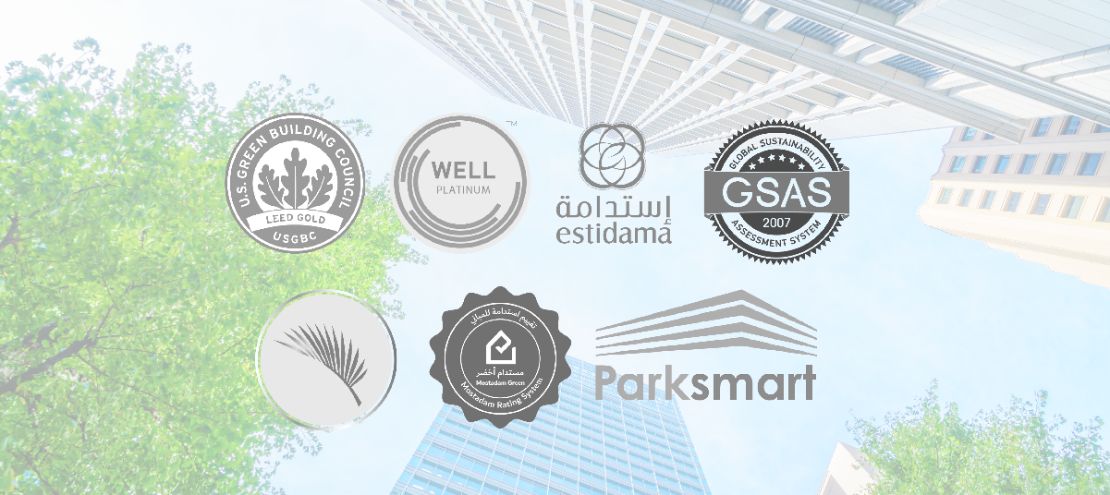
INSIGHT June 29, 2024
Understanding Green Building Certifications:
Paving The Way For Sustainability
In the evolving landscape of architecture and construction, green building certifications have emerged as key indicators of sustainability and environmental stewardship. These certifications are not just badges of honor; they represent a profound commitment to reducing the environmental impact of buildings, enhancing occupant well-being, and contributing positively to the communities they serve. As global awareness of environmental issues continues to grow, understanding the significance, types, and impacts of green building certifications becomes increasingly important for professionals and stakeholders across the construction industry.
This comprehensive article aims to educate and inspire readers about the importance and impact of green building certifications, exploring how they are transforming the built environment for a sustainable future.
THE ESSENCE OF GREEN BUILDING CERTIFICATIONS
Green building certifications are standardized frameworks used to evaluate the environmental performance and sustainability of buildings and construction projects. These certifications assess various aspects of sustainability, including energy efficiency, water usage, indoor environmental quality, materials selection, and site development. By meeting the specified criteria, buildings can achieve certification, demonstrating their commitment to sustainability and providing a tangible measure of their environmental performance.

The Importance Of Green Building Certifications
Green building certifications play a crucial role in promoting sustainability within the construction industry. They provide:
- A Benchmark for Sustainability: Certifications offer clear, measurable standards for evaluating the sustainability of buildings, encouraging developers, architects, and builders to incorporate green practices into their projects.
- Recognition of Environmental Leadership: Achieving certification recognizes the efforts of projects that go above and beyond in terms of environmental stewardship, setting them apart in the market.
- Enhanced Occupant Well-being: Certified buildings often provide healthier, more comfortable environments for occupants, leading to increased productivity, satisfaction, and well-being.
- Incentives for Sustainable Development: Many certifications come with benefits such as tax incentives, zoning allowances, and marketing advantages, encouraging more projects to strive for sustainability.

Types of Green Building Certifications
Several green building certifications are recognized globally, each with its unique focus and criteria. Among the most prominent are:
- LEED (Leadership in Energy and Environmental Design): Developed by the U.S. Green Building Council (USGBC), LEED is one of the most widely used green building certification systems worldwide, covering all types of buildings and focusing on sustainability across several categories.
- BREEAM (Building Research Establishment Environmental Assessment Method): Originated in the UK, BREEAM is the world's oldest comprehensive green building certification, assessing the sustainability of buildings against a broad set of criteria.
- WELL Building Standard: Focused on human health and wellness within the built environment, the WELL Building Standard evaluates buildings based on features that impact occupants' health and well-being.
- Green Star: Used primarily in Australia and New Zealand, Green Star evaluates the sustainability of buildings and communities, focusing on environmental, economic, and social sustainability.

The Impact of Green Building Certifications
The adoption of green building certifications has a significant impact on various aspects of the built environment and society:
- Environmental Impact: Certified buildings typically consume less energy, use fewer resources, and generate less waste, contributing to the conservation of natural resources and the reduction of greenhouse gas emissions.
- Economic Benefits: Beyond reducing operational costs through energy and water savings, certified buildings often enjoy higher property values, attract tenants more easily, and benefit from financial incentives.
- Social and Health Benefits: By prioritizing indoor environmental quality and occupant comfort, certified buildings can enhance the health, productivity, and satisfaction of their occupants, contributing to overall societal well-being.

Overcoming Challenges and Embracing Opportunities
While pursuing green building certification presents challenges, including initial costs and the complexity of the certification process, the long-term benefits far outweigh these obstacles. Innovations in building materials, technologies, and design strategies continue to make sustainable building practices more accessible and cost-effective, opening new avenues for achieving certification.
Conclusion: A Sustainable Future Through Green Building Certifications
Green building certifications stand at the forefront of the movement towards a more sustainable and environmentally conscious construction industry. By setting high standards for sustainability, these certifications inspire innovation, drive market transformation, and contribute to the creation of spaces that are not only eco-friendly but also healthful and productive for their occupants.
As we look to the future, the role of green building certifications in shaping the built environment will undoubtedly continue to grow, highlighting the collective effort required to achieve a sustainable world.
At ECOBUILD, we understand the complexities and challenges of achieving green building certifications. Our expertise in sustainable design, energy efficiency, and environmental stewardship positions us as your ideal partner in navigating the certification process. Whether you're aiming for LEED, BREEAM, WELL, or any other green certification, ECOBUILD can provide the guidance, support, and innovative solutions you need to achieve your sustainability goals, transforming your project into a benchmark for environmental excellence.
